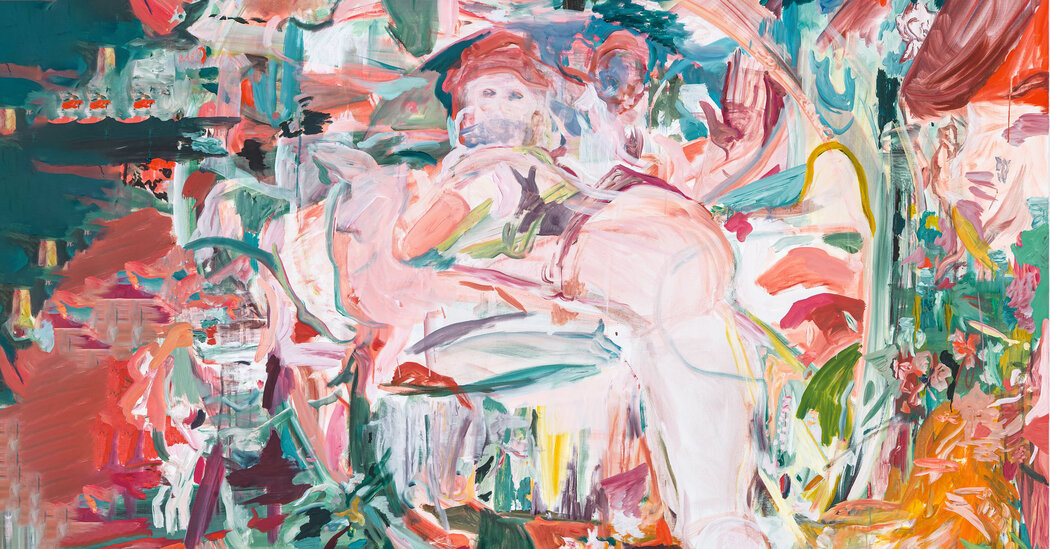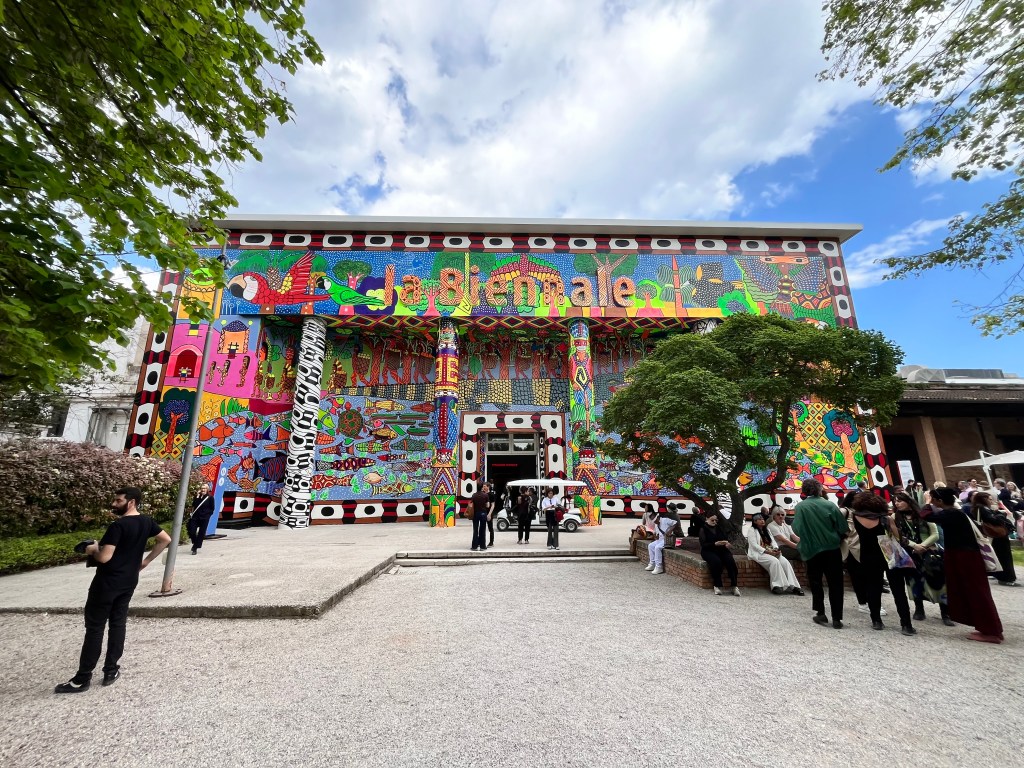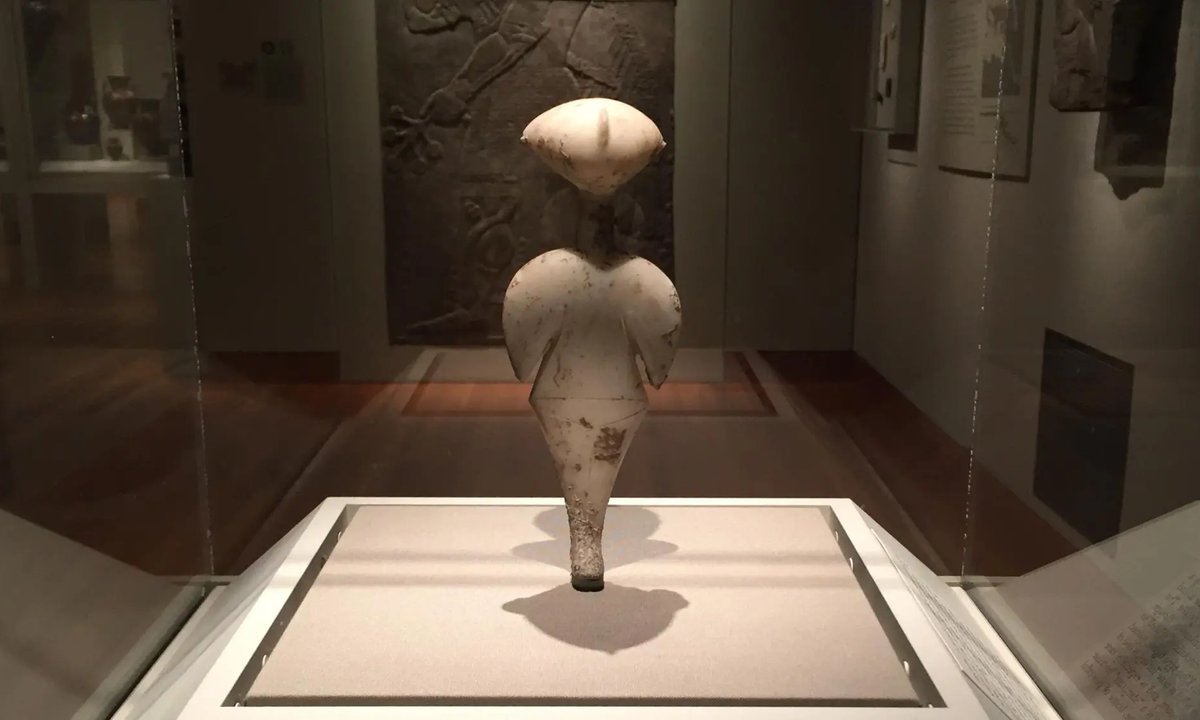Artists change, but so do critics. Welcome to my turnaround — from a fairly negative first take on the work of the New York-based painter Cecily Brown, to a largely positive one. The shift in opinion — which, off and on, took the better part of 23 years — has been pushed over the finish line by “Cecily Brown: Death and the Maid,” a revelatory if crowded survey of around 20 paintings accompanied by 25 drawings and prints, at the Metropolitan Museum of Art.
It was organized by Ian Alteveer, curator in its modern and contemporary art department, who focuses on Brown’s reinterpretation of the vanitas motifs over the last 25 years — skulls, skeletons, mirror-gazing young beauties and the 17th-century-inspired still lifes of tables heaped with luxury foodstuffs. Traditionally these accumulations served to remind the faithful of the inevitability of death and the sinfulness of earthly goods. The message was, in other words, you can’t take it with you. And this focus in turn brings some order to Brown’s enormous and varied output, and helped me see the challenges of her work in a new light.
Brown, who was born in London in 1969, started painting in her teens and received a good grounding in the medium from her “uncle,” the British art critic David Sylvester, whom she learned in her early 20s, was actually her father.
Her most immediate precursors are British painters of bare flesh, like Francis Bacon and Lucien Freud (but also Giacometti), and it should be remembered that she thinks of herself as a realist painter.
Brown relocated to New York in 1994, a year after graduating from the Slade School of Art, and by 1998 had two solo shows at Deitch Projects in SoHo on her résumé. Both concentrated on paintings of frolicsome, amorous bunnies. By 2000, when she had her first show in Gagosian’s SoHo gallery, the bunnies had given way to human bodies and body parts — often naked — that were partly obscured by thatches and fields of manic brushstrokes. These evoke the American Abstract Expressionists, whose fevered impastos she slyly scaled down and deflated, letting their hot air escape.
I was not impressed by Brown’s work at the time and gave a negative review to the Gagosian show. Back then her paint textures, often embedded with embracing figures in flagrante delicto, or thereabouts, struck me as pointlessly messy, gratuitously provocative, amateurish in their mixes of abstraction and representation — and made to sell, which they did. Her rise as a market phenom was meteoric, complete with an appearance on Charlie Rose. Her work quickly became a staple of public and private collections and scored impressive auction prices. (Her high price is $6.7 million— third in total value behind Jenny Saville and Yayoi Kusama for living female artists, according to Sotheby’s. However you regard her work, these are feminist triumphs and cause for celebration.)
Unexpectedly, my review nagged at me.
What really bothered me was Brown as a painter of excess, offering endless possibilities for looking and interpreting — more thansome viewers can easily handle — which can be initially off-putting, especially if, like me, you were raised Minimalist.
Brown has said in interviews that she wanted her paintings to make people slow down and experience the fullness and richness of her work. Her masses of brushwork harbor small images, some intentional, some in the eye of the beholder. What I would come to see is that they are much more deliberate than they first appeared to me. In retrospect I realized I had not let my looking be slowed and had taken the unusual complexities of Brown’s art as simple busyness.
Just as I was realizing that some rethinking of Brown’s work was in order, along came “The English Garden,” Brown’s remarkable show of 66 small oils (2005-2014) seen at Maccarone gallery in West SoHo in 2015. Close in size to oil studies, they had an unstrained, intoxicating directness, forming a primer on Brown’s sense of touch. Subsequent solo shows at Paula Cooper in 2017 and 2020 were encouraging, a ramp up to the Met.
The work in the Met show is beautiful, and became more so on each of my three visits. The more I looked at the paintings, the more they calmed down, opened up and differentiated themselves from one another in color and composition. (This is good since Brown can sometimes seem to make the same painting over and over again.) The reds, pinks and oranges may still dominate, but there are also paintings with skies or walls of vivid blue and lavender. The colors are strong and contemporary. Warnings of mortality aside, they give the show an uplifting energy.
Brown’s work evokes many other artists, living and dead, usually on purpose, but not always. Some connections may be in the eyes of the beholders, which doesn’t detract. She has borrowed Fragonard’s palette and the teeming crowd scenes of the Flemish master Pieter Bruegel the Elder and especially the fantastical creatures of Hieronymous Bosch. El Greco’s undulant line is visible in two of the show’s best and newest pictures, “Death and the Maid” (2022) and “Maid in a Landscape” (2021).
Nearby new versions of the vanitas images of women and mirrors are also outstanding. “Vanity Shipwreck” (2021-22) is a watery scene centered on a woman with perhaps a breast on her right shoulder blade. Her mouth, open in a lament or siren song, has the red lips of one of de Kooning’s women. As she surveys the chaos, the sea lurches and churns, objects rise and sink. The myriad choices that make a life — or a painting — are all fully exposed.
Around 2020, during Covid, Brown began to tackle vanitas still lifes more directly. One result is “Lobsters, Oysters, Cherries and Pearls” (2020), a comedic reprise of the subject as portrayed by the Flemish painter Frans Snyders (1579-1657). It depicts a groaning board of earthly delights rendered primarily in a bright deep red. Snyders’s inclusion of the occasional (live) cat in his still lifes carries over to Brown’s enormous black feline hiding beneath the table. Could be the devil, although the improvisations in red to either side of the animal’s face seem to contain a crucifixion or two.
In some paintings here the vanitas theme is not clearly stated, but sensed, as an undercurrent. You may wonder if “No You for Me” (2013), with its heartbreaking title, is meant to evoke Delacroix’s 1827 “The Death of Sardanapalus” with its large pink divan, from which the defeated Assyrian king oversees the destruction of those he most cares about: his queens, pages, horses and dogs — before ending his own life. In Brown’s painting there’s a hint of a pink bed and a redheaded woman lying on it, gazing toward us — all captured in a large circle that seems to be a mirror. Then, behind her, a darker face and raised hand suddenly recalls the courtesan and maid of Manet’s “Olympia.”
One of the obligations of a critic is the willingness to be betrayed, sometimes brutally, by your own taste, whose ins and outs you discover over a lifetime of looking. I could argue that Cecily Brown has become a better painter. But really it’s the often mysterious expansion of my own taste that we’re talking about here. With luck, you learn to see more and deeper. Peter Schjeldahl, the late art critic for The New Yorker, put it more aphoristically. When asked if he ever changed his opinions about artists he replied, “If your opinions aren’t changing, you’re dead.”
Cecily Brown: Death and the Maid
Through Dec. 3 at the Metropolitan Museum, 1000 Fifth Avenue, Manhattan; 212-535-7710, metmuseum.org.



